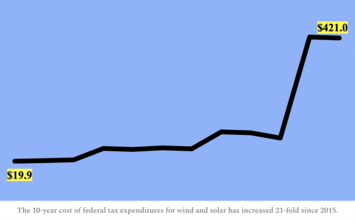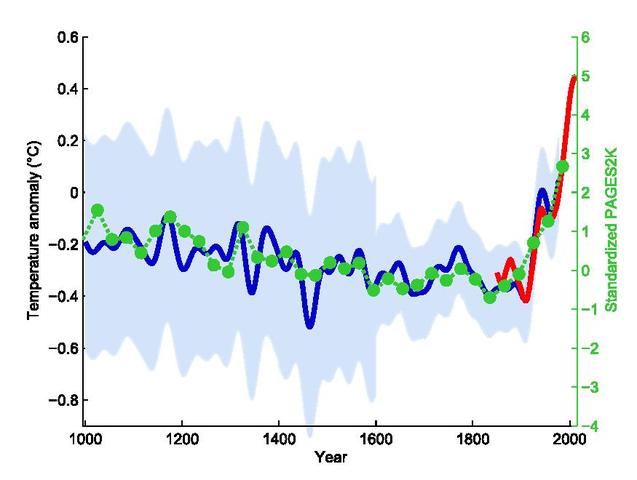
In 2005, Scientific American published an article saying that the hockey stick graph published a few years earlier by Michael Mann, an academic who now works at the University of Pennsylvania, had become “an iconic symbol of humanity’s contribution to global warming.” The article continued, saying the image, which shows a looming spike in temperature, has become “a focal point in the controversy surrounding climate change and what to do about it.”
That was an understatement.
Mann and the hockey stick have become defining examples of the politicization of climate science. The hockey stick played a prominent role in Mann’s defamation lawsuit against author and journalist Mark Steyn. Last year, a jury in Washington, DC, awarded Mann $1 million in that case. During the trial, Canadian journalist Terence Corcoran declared the hockey stick has become “a powerful and effective piece of supposed evidence for makers of climate policy and a near-religious icon that activists continue to revere.”

This is the hockey stick graph Mann et al. published in 1999. Credit: Wikipedia
While scientists and journalists can argue about Mann’s hockey stick, his methods, greenhouse gas emissions, and temperature forcings, there can be no argument about the staggering cost of the subsidies Congress has given to Big Wind, Big Solar, and other alt-energy outfits in the name of climate change. In late November, the Treasury Department published the newest edition of its annual report on tax expenditures, which it says are “revenue losses attributable to provisions of Federal tax laws.”
What do those Treasury reports show? A hockey stick.
The Inflation Reduction Act, which became law in 2022 thanks to a single vote cast by Kamala Harris, has turned into a run on the Treasury. As seen at the top of this article, the IRA has fueled a hockey stick of gradual — and then exploding — federal tax expenditures for the investment tax credit and production tax credit. Those credits, which are the principal drivers behind the deployment of wind and solar energy, and a handful of other forms of alt-energy, are, by far, the most expensive energy-related provisions in the federal tax code. Between 2025 and 2034, the ITC and PTC will account for more than half of all energy-related tax provisions. And that total does not include the tax credits for electric vehicles.
Read the rest of this piece at Robert Bryce Substack.
Robert Bryce is a Texas-based author, journalist, film producer, and podcaster. His articles have appeared in a myriad of publications including the Wall Street Journal, New York Times, Forbes, Time, Austin Chronicle, and Sydney Morning Herald.
Photo: courtesy Robert Bryce Substack.












